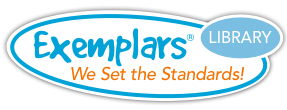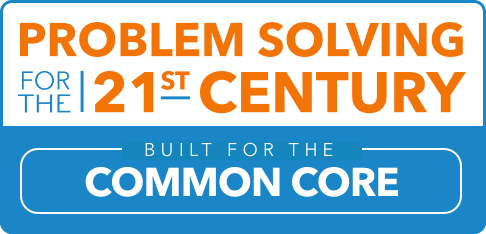Use random sampling to draw inferences about a population.
7.SP
Statistics and Probability
Standards in this domain:
- 7.SP.A.1 Standard not applicable.
Understand that statistics can be used to gain information about a population by examining a sample of the population; generalizations about a population from a sample are valid only if the sample is representative of that population. Understand that random sampling tends to produce representative samples and support valid inferences.
Use data from a random sample to draw inferences about a population with an unknown characteristic of interest. Generate multiple samples (or simulated samples) of the same size to gauge the variation in estimates or predictions. For example, estimate the mean word length in a book by randomly sampling words from the book; predict the winner of a school election based on randomly sampled survey data. Gauge how far off the estimate or prediction might be.
7.SP.A.2 is an embedded standard. This classification refers to problem-solving tasks where the underlying math concept in a Common Core standard is "embedded" within the problem, but the standard is not directly aligned to the problem. A student may use the underlying math concept in this standard to solve the task, but cannot be required to use that math concept due to the open-ended nature of problem solving. These tasks should not be given as an assessment, but rather used with students to practice this particular math concept/skill.
Draw informal comparative inferences about two populations.
Informally assess the degree of visual overlap of two numerical data distributions with similar variabilities, measuring the difference between the centers by expressing it as a multiple of a measure of variability. For example, the mean height of players on the basketball team is 10 cm greater than the mean height of players on the soccer team, about twice the variability (mean absolute deviation) on either team; on a dot plot, the separation between the two distributions of heights is noticeable.
7.SP.B.3 is an embedded standard. This classification refers to problem-solving tasks where the underlying math concept in a Common Core standard is "embedded" within the problem, but the standard is not directly aligned to the problem. A student may use the underlying math concept in this standard to solve the task, but cannot be required to use that math concept due to the open-ended nature of problem solving. These tasks should not be given as an assessment, but rather used with students to practice this particular math concept/skill.
- 7.SP.B.4 Standard not applicable.
Use measures of center and measures of variability for numerical data from random samples to draw informal comparative inferences about two populations. For example, decide whether the words in a chapter of a seventh-grade science book are generally longer than the words in a chapter of a fourth-grade science book.
7.SP.B.4 is not applicable. This classification refers to Common Core Standards that cannot be assessed through problem solving. For this reason, tasks have not been included for this particular standard.
Depth-of-Knowledge Level 3 (Strategic Thinking) requires reasoning, planning, using evidence, and a higher level of thinking than the previous two levels. In most instances, requiring students to explain their thinking is a Level 3. Activities that require students to make conjectures are also at this level. The cognitive demands at Level 3 are complex and abstract. The complexity does not result from the fact that there are multiple answers, a possibility for both Levels 1 and 2, but because the task requires more demanding reasoning. An activity, however, that has more than one possible answer and requires students to justify the response they give would most likely be a Level 3. Other Level 3 activities include drawing conclusions from observations; citing evidence and developing a logical argument for concepts; explaining phenomena in terms of concepts; and deciding which concepts to apply in order to solve a complex problem.
Depth-of-Knowledge definition per Normal L. Webb & others, Web Alignment Tool (WAT) Training Manual, University of Wisconsin-Madison and Wisconsin Center for Education Research, 2005, page 45. Accessed June 2012. http://wat.wceruw.org/index.aspx
Investigate chance processes and develop, use, and evaluate probability models.
- 7.SP.C.5 Standard not applicable.
Understand that the probability of a chance event is a number between 0 and 1 that expresses the likelihood of the event occurring. Larger numbers indicate greater likelihood. A probability near 0 indicates an unlikely event, a probability around 1/2 indicates an event that is neither unlikely nor likely, and a probability near 1 indicates a likely event.
7.SP.C.5 is not applicable. This classification refers to Common Core Standards that cannot be assessed through problem solving. For this reason, tasks have not been included for this particular standard.
Depth-of-Knowledge Level 3 (Strategic Thinking) requires reasoning, planning, using evidence, and a higher level of thinking than the previous two levels. In most instances, requiring students to explain their thinking is a Level 3. Activities that require students to make conjectures are also at this level. The cognitive demands at Level 3 are complex and abstract. The complexity does not result from the fact that there are multiple answers, a possibility for both Levels 1 and 2, but because the task requires more demanding reasoning. An activity, however, that has more than one possible answer and requires students to justify the response they give would most likely be a Level 3. Other Level 3 activities include drawing conclusions from observations; citing evidence and developing a logical argument for concepts; explaining phenomena in terms of concepts; and deciding which concepts to apply in order to solve a complex problem.
Depth-of-Knowledge definition per Normal L. Webb & others, Web Alignment Tool (WAT) Training Manual, University of Wisconsin-Madison and Wisconsin Center for Education Research, 2005, page 45. Accessed June 2012. http://wat.wceruw.org/index.aspx
Approximate the probability of a chance event by collecting data on the chance process that produces it and observing its long-run relative frequency, and predict the approximate relative frequency given the probability. For example, when rolling a number cube 600 times, predict that a 3 or 6 would be rolled roughly 200 times, but probably not exactly 200 times.
7.SP.C.6 is an embedded standard. This classification refers to problem-solving tasks where the underlying math concept in a Common Core standard is "embedded" within the problem, but the standard is not directly aligned to the problem. A student may use the underlying math concept in this standard to solve the task, but cannot be required to use that math concept due to the open-ended nature of problem solving. These tasks should not be given as an assessment, but rather used with students to practice this particular math concept/skill.
Develop a probability model and use it to find probabilities of events. Compare probabilities from a model to observed frequencies; if the agreement is not good, explain possible sources of the discrepancy.
- 7.SP.C.7a
Develop a uniform probability model by assigning equal probability to all outcomes, and use the model to determine probabilities of events. For example, if a student is selected at random from a class, find the probability that Jane will be selected and the probability that a girl will be selected.
- 7.SP.C.7b
Develop a probability model (which may not be uniform) by observing frequencies in data generated from a chance process. For example, find the approximate probability that a spinning penny will land heads up or that a tossed paper cup will land open-end down. Do the outcomes for the spinning penny appear to be equally likely based on the observed frequencies?
Find probabilities of compound events using organized lists, tables, tree diagrams, and simulation.
- 7.SP.C.8a
Understand that, just as with simple events, the probability of a compound event is the fraction of outcomes in the sample space for which the compound event occurs.
7.SP.C.8a is an embedded standard. This classification refers to problem-solving tasks where the underlying math concepts in a Common Core standard is "embedded" within the problem, but the standard is not directly aligned to the problem. A student may use the underlying math concept in this standard to solve the task, but cannot be required to use that math concept due to the open-ended nature of problem solving. These tasks should not be given as an assessment, but rather used with students to practice a particular math concept or skill.
- 7.SP.C.8b
Represent sample spaces for compound events using methods such as organized lists, tables and tree diagrams. For an event described in everyday language (e.g., "rolling double sixes"), identify the outcomes in the sample space which compose the event.
7.SP.C.8b is an embedded standard. This classification refers to problem-solving tasks where the underlying math concepts in a Common Core standard is "embedded" within the problem, but the standard is not directly aligned to the problem. A student may use the underlying math concept in this standard to solve the task, but cannot be required to use that math concept due to the open-ended nature of problem solving. These tasks should not be given as an assessment, but rather used with students to practice a particular math concept or skill.
- 7.SP.C.8c
Design and use a simulation to generate frequencies for compound events. For example, use random digits as a simulation tool to approximate the answer to the question: If 40% of donors have type A blood, what is the probability that it will take at least 4 donors to find one with type A blood?


7.SP.A.1 is not applicable. This classification refers to Common Core Standards that cannot be assessed through problem solving. For this reason, tasks have not been included for this particular standard.
7.SP.A.1 is too narrowly defined to assess at DOK3.
Depth-of-Knowledge Level 3 (Strategic Thinking) requires reasoning, planning, using evidence, and a higher level of thinking than the previous two levels. In most instances, requiring students to explain their thinking is a Level 3. Activities that require students to make conjectures are also at this level. The cognitive demands at Level 3 are complex and abstract. The complexity does not result from the fact that there are multiple answers, a possibility for both Levels 1 and 2, but because the task requires more demanding reasoning. An activity, however, that has more than one possible answer and requires students to justify the response they give would most likely be a Level 3. Other Level 3 activities include drawing conclusions from observations; citing evidence and developing a logical argument for concepts; explaining phenomena in terms of concepts; and deciding which concepts to apply in order to solve a complex problem.
Depth-of-Knowledge definition per Normal L. Webb & others, Web Alignment Tool (WAT) Training Manual, University of Wisconsin-Madison and Wisconsin Center for Education Research, 2005, page 45. Accessed June 2012. http://wat.wceruw.org/index.aspx